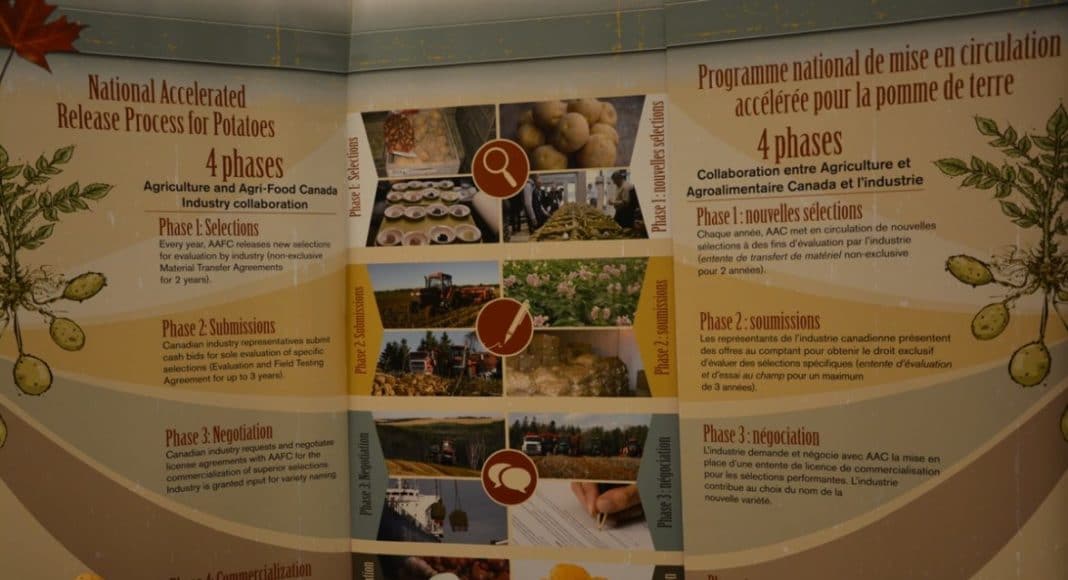Red-skinned potato varieties made up half of the total selections Agriculture and Agri-Food Canada (AAFC) breeders released to industry during the annual potato selection release open house on Feb. 15.
For the first time, the program will unveil a multi-purpose red-skinned selection, showing promise for processing as wedges and as a traditional table potato.
In all, 15 selections were displayed this year by the AAFC breeding program for industry representatives in Fredericton, N.B., Lethbridge, Alta. and Guelph, Ont.
The selections were narrowed down from more than 100,000 hybrid seedlings grown, tested and measured over six years in AAFC greenhouses, laboratories and fields across Canada.
The plan is to provide regional data for varieties that have been developed for Canada to ensure they are well-suited for production in an area.
“We are well-positioned to do it because we are an impartial evaluator,” said Michele Konschuh, a potato research scientist with Alberta Agriculture and Forestry in Brooks. “We’re not the breeder of the variety, or the end user of the variety, but we work with both sides.”
Culinary evaluations are also part of the trial.
For the chipping industry, valuable traits include high specific gravity, a nice, uniform size, a good yield, resistance to pests and diseases, and storage characteristics. They also have to make fabulous chips.
For the french fry industry, valuable traits include a good shape, high yield, high specific gravity, they can’t use a lot of oil and they need to be able to store well.
For fresh market varieties, appearance and taste are of primary importance, as well as correct sizes for bagging.
“There are many different attributes, different varieties and different shapes for each of those,” Konschuh said.
These days, there is a lot of environmental focus from consumers and that has some growers looking for potatoes that are better users of water and nitrogen, and more resistance to pests and diseases on their own, so fewer chemical controls are needed.
“The challenge with the potato industry, as with any industry, are the changing factors,” said Terry Morishita, field consultant for Old Dutch in Lethbridge, Alta.
“It’s a balance of everything. It’s a balance of quality, economic advantage, that kind of thing. We are selecting varieties that are easier to store and easier to process, which saves everybody money, too. We try to get a really nice quality so it’s aesthetically pleasing to the consumer as well. That’s what every company is looking for, and that’s what we’re competing against so the consumer will buy our products.”
Source: AAFC Lethbridge and the Lethbridge Herald











